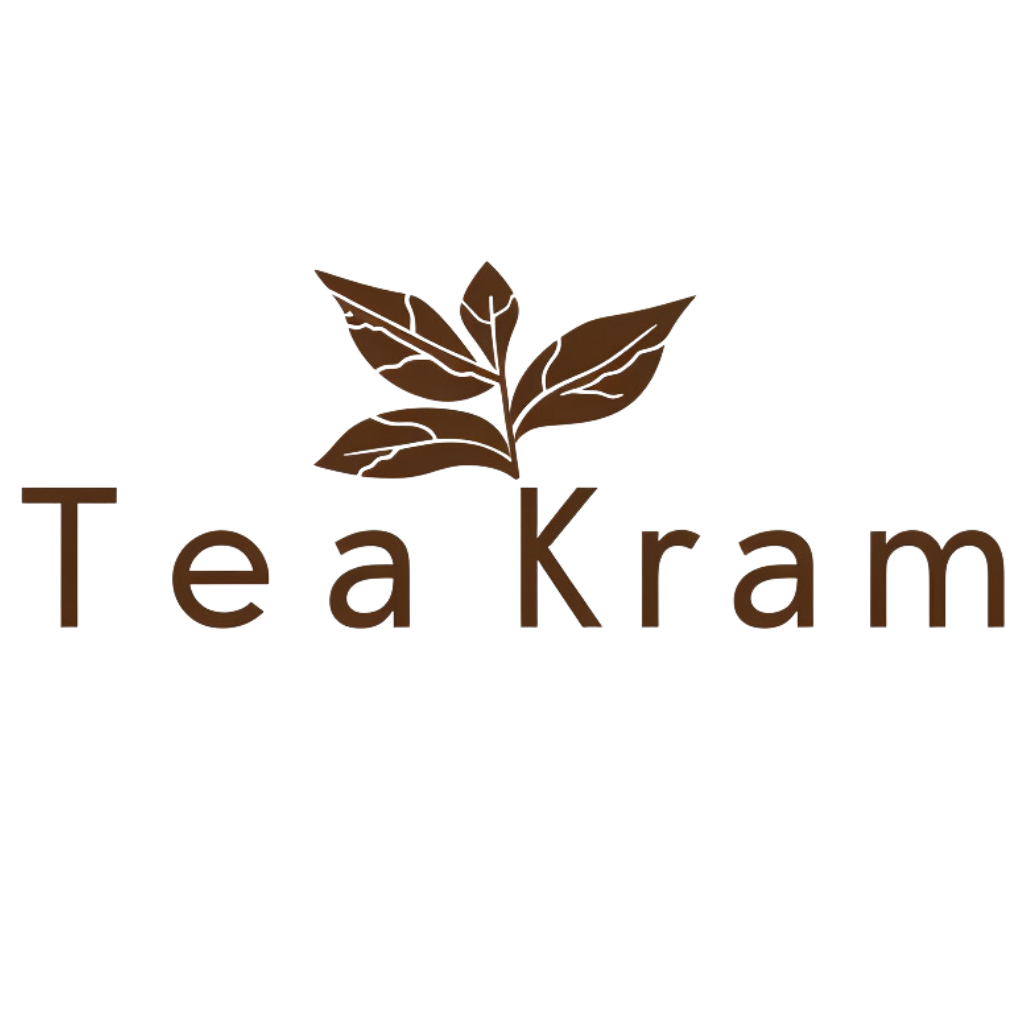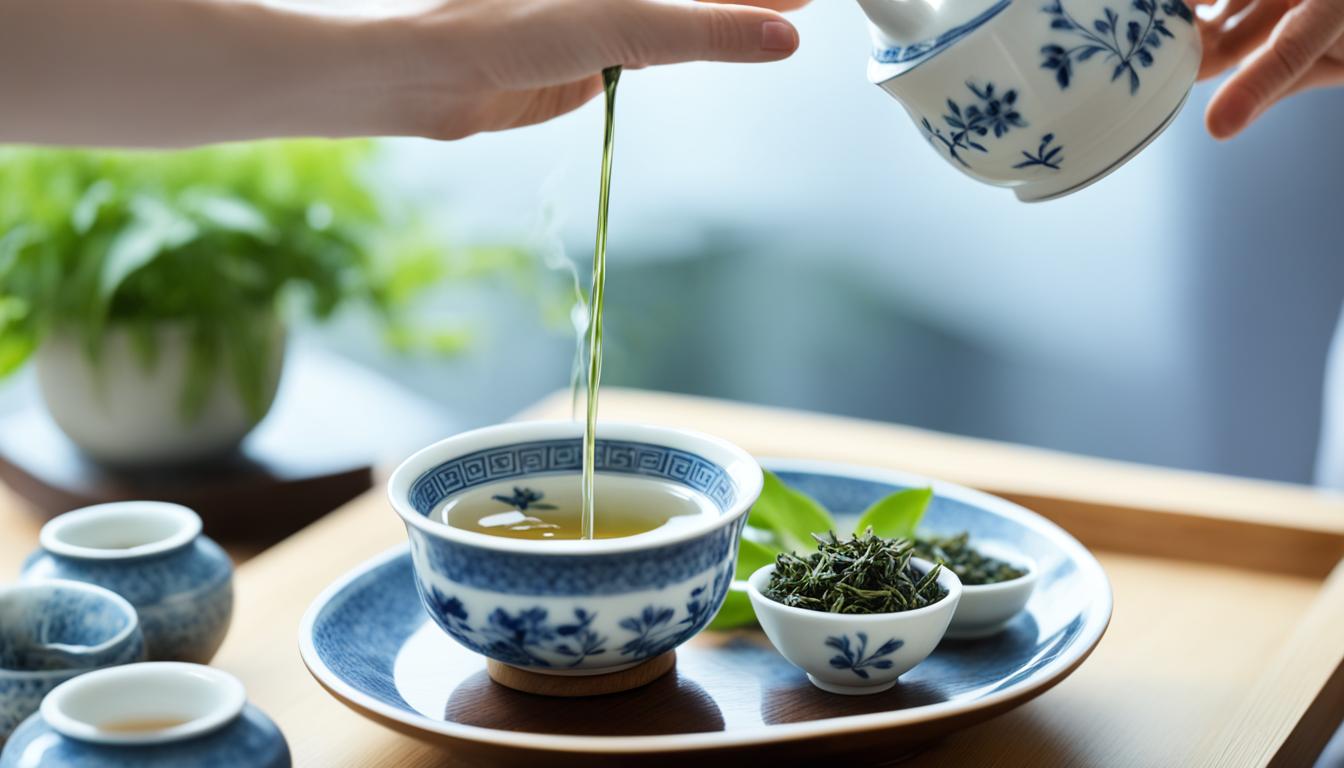Using a Gaiwan for authentic tea brewing can be a game-changer for both tea lovers and beginners. It’s a way to connect with the centuries of Chinese tea culture and Gaiwan brewing. By learning the steps of Gaiwan brewing, you get more than just tea. You get a cultural journey that’s peaceful and elegant, like the art of traditional tea brewing with a Gaiwan itself.
Key Takeaways
- Embracing Gaiwan equipment to authentically brew teas of all varieties.
- Understanding the significance of each component in a Gaiwan set.
- Learning proper techniques to maximize the sensory profile of the tea.
- Appreciating the nuance of water temperature and steeping duration in tea brewing.
- Engaging with the broader narrative of Chinese tea culture through Gaiwan use.
- Discovering and accessing resources for improving Gaiwan brewing skills.
Unveiling the Historical Significance of the Gaiwan
The Gaiwan is a key part of traditional tea brewing with a Gaiwan. It holds a special place in Chinese tea culture and Gaiwan brewing. The history of the Gaiwan tells a story that helps us understand the depth of tea enjoyment.
The Ming Dynasty and the Advent of Gaiwan Use
The Gaiwan first appeared on the tea tables of the Ming Dynasty. It brought elegance to tea drinking. That time saw a big change in tea habits, from powdered to whole leaf. The Gaiwan was key in this evolution.
From Yixing Clay to Elegant Porcelain: Evolution of Gaiwan Design
The shift from Yixing clay to porcelain shows the quest to improve tea tools. This change reflects a move towards greater refinement. It highlighted the benefits of Gaiwan tea brewing: clearer tea, purer taste, and engaging brewing.
Understanding the Gaiwan’s Place in Chinese Tea Culture
The Gaiwan is simple, yet profound. It’s more than just a tool; it’s part of Chinese tea culture and Gaiwan brewing. It’s essential in Gongfu tea ceremonies, showing the importance of care, mindfulness, and tradition in tea making.
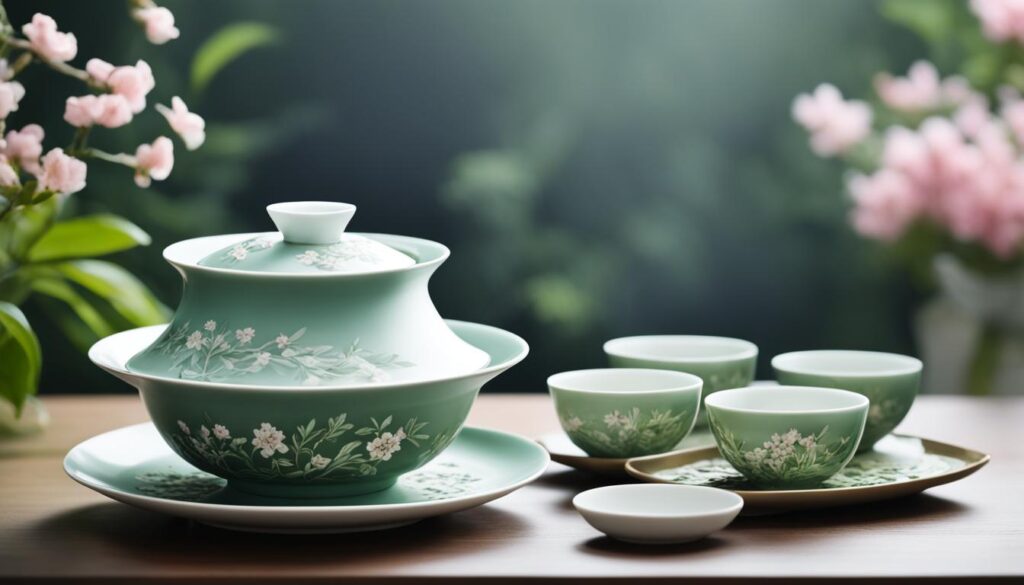
Benefits of Gaiwan Tea Brewing: Enhancing Sensory Experience
The Gaiwan is central to Chinese tea culture. It’s more than just a brewing vessel; it’s a gateway to sensory enrichment. It looks like a small bowl. Yet, Gaiwan tea brewing brings profound benefits, particularly in flavor unlocking. Tea lovers prefer the Gaiwan to fully bring out a tea leaf’s flavors.
They say brewing tea traditionally with a Gaiwan deepens your understanding and enjoyment of the subtle flavors in each cup.
Unlocking the Full Palette of Tea Flavors with a Gaiwan
Using a Gaiwan involves an art that goes beyond its simple parts. Its high leaf-to-water ratio highlights the tea’s natural features, letting each brew tell its story. Unlike Western methods that can overpower soft teas, the Gaiwan keeps the leaf’s quality, unfolding complex flavors from floral to sweet. With careful lid handling during pouring, it extracts rich flavors without burning hands or ruining leaves.
Comparing Gaiwan and Western Brewing Methods
Gaiwan and Western brewing have clear differences in approach and results. The Gaiwan excels in many short, precise steeps, unlike the lengthy steeps of some Western methods. This careful brewing process enhances the taste. The Gaiwan reveals subtle flavors through each steep, which Western methods often lose in their single, long infusion.
| Gaiwan Brewing | Western Brewing |
|---|---|
| High leaf-to-water ratio | Lower leaf-to-water ratio |
| Multiple short infusions | Usually one long infusion |
| Subtleties and complexities are prominent | Flavors can be robust but less nuanced |
| Requires more attention and technique | Easier and often more convenient |
| Enhanced control over temperature and steeping | Temperature and steeping often less precise |
| Ideal for Chinese Green, White, and Oolong teas | Better suited for less delicate teas like Black and Herbal teas |
Traditional tea brewing with a Gaiwan embraces a legacy that enriches both taste and tradition with every infusion. Whether rooted in history or brewed in a Gaiwan, each cup offers an experience that delights the senses and celebrates the art of tea making.
Using a Gaiwan for Authentic Tea Brewing
The art of authentic tea brewing with Gaiwan is a nod to tradition. It showcases a connoisseur’s quest for the perfect cup. The Gaiwan, or “covered bowl”, seems simple. Yet, it’s praised for its ability to enhance the tea’s flavor using ancient methods.
The design of the Gaiwan includes a saucer, a cup, and a lid. This design helps hold in the tea’s scent. Each part plays a role in blending the leaves and water. This process brings out flavors you can’t get with other methods.
| Step | Action | Purpose |
|---|---|---|
| 1 | Warm the Gaiwan with hot water. | Prepares the vessel and emphasizes the teas’ aroma. |
| 2 | Add tea leaves | The quantity of leaves affects infusion strength and depth. |
| 3 | Pour hot water over the leaves. | Using the right temperature water releases flavors well. |
| 4 | Cover with lid and steep. | Keeps brewing time in check for balanced flavors. |
| 5 | Decant into a cup, using the lid to hold back leaves. | Ensures the infusion is clear, without leaf bits. |
In Gaiwan brewing step by step, you learn not just the steps but the flow. It lets you slow down and enjoy the process. Each step is a chance to reflect and improve your day.
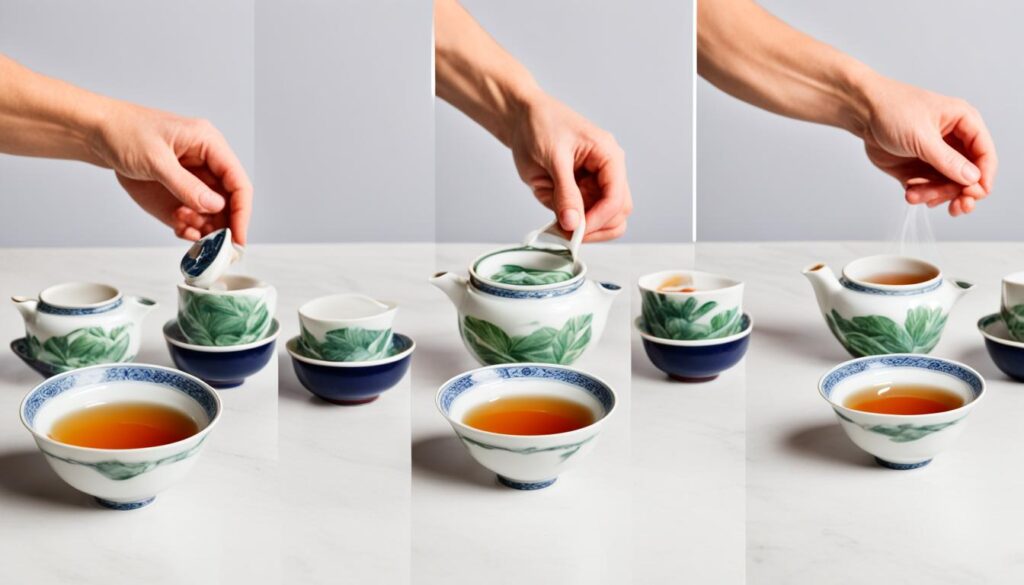
Using the Gaiwan also introduces enthusiasts to Chinese tea ceremonies. Mastering the Gaiwan involves mindfulness and patience. It turns brewing into a peaceful practice, making tea time calming.
The Gaiwan works with many teas, like black, white, or oolong. It allows every tea to show its true essence. Thus, the Gaiwan is more than just a container. It’s a cherished companion for tea lovers.
Step-by-Step Guide to Gaiwan Brewing Techniques
Exploring the Gaiwan brewing techniques can truly change how you enjoy tea. This guide is designed to help both newbies and expert tea lovers in mastering the step-by-step Gaiwan brewing.
To choose the best tea for Gaiwan brewing, matching the tea with the right water temperature and time is key. Start with premium leaves that fit the Gaiwan’s small space. Here are the best tea pairings:
| Tea Type | Water Temperature | Steeping Time |
|---|---|---|
| Green Tea | 175°F – 185°F (80°C – 85°C) | 1-2 minutes |
| Oolong Tea | 185°F – 205°F (85°C – 96°C) | 2-3 minutes |
| Black Tea | 205°F – 212°F (96°C – 100°C) | 2-3 minutes |
| White Tea | 160°F – 185°F (71°C – 85°C) | 1-3 minutes |
| Pu-erh Tea | 212°F (100°C) | 3-5 minutes |
The heart of traditional tea brewing with a Gaiwan is not just in the recipe. It’s in the hands-on moments and connection with the tea and vessel. Here are the steps for a rich and aromatic tea:
- Put around 5 grams of tea leaves into the Gaiwan.
- Boil water to the right temperature for your tea.
- Carefully pour water into the Gaiwan, leaving a bit of space at the top.
- Cover it with the lid and wait the advised steeping time.
- Finish by pouring the tea out, using the lid to stop leaves from falling out.
Getting these steps right feels like a calm, precise dance. It links us to a long history of tea traditions.
Using the Gaiwan is special compared to other methods. Hold the saucer with your other hand for balance. Touch the Gaiwan’s rim with only your thumb and middle finger. This keeps you from the heat. Your index finger should lightly press the lid during pouring.
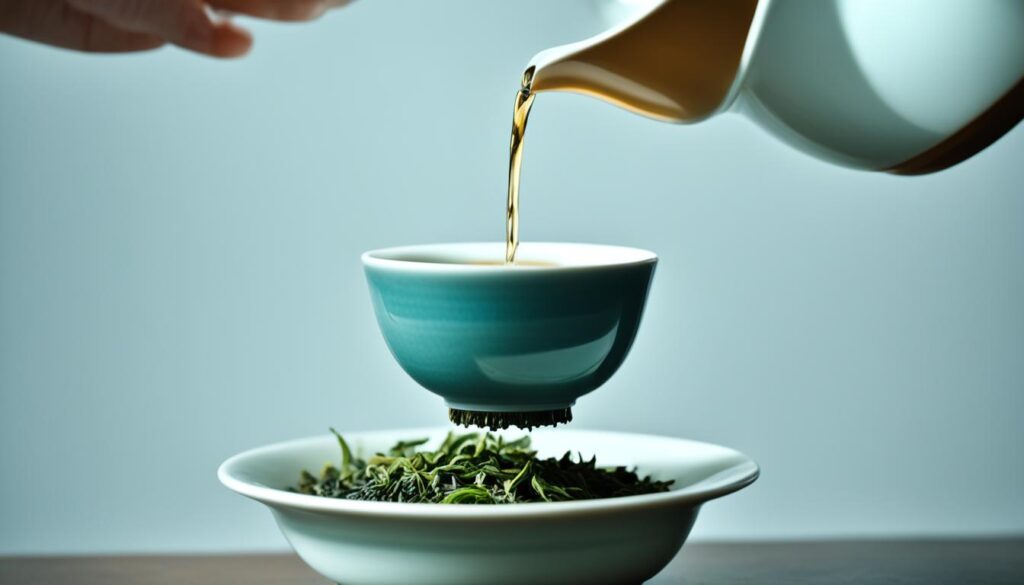
Every step with the Gaiwan, from picking your tea to the last drop, is a quiet, thoughtful journey. It’s more than just drinking tea. It’s about honoring the deep traditions behind it.
The Rituals and Ceremonies Involving Gaiwan Brewing
In Chinese tea culture, a Gaiwan is key for both spiritual and social tea moments. Gaiwan brewing in culture is more than just a method. It’s a ceremonial act with deep history. These rituals shine in the Gongfu tea ceremony. This ceremony values precision, patience, and artistry, enhancing how we taste tea.
The Gongfu tea ceremony involves carefully planned, smooth actions. Each step in the process is practiced and polished. Using a Gaiwan in this ceremony is crucial. It brews tea and symbolizes Chinese tea culture’s elegance. How a tea master handles the Gaiwan, pours the tea, and serves it shows deep respect for guests and the tea.
Below, we outline the key rituals and ceremonies of Gaiwan:
- Getting the tea space ready — a peaceful setting is key.
- Picking the tea leaves — each type needs a different approach in the Gaiwan.
- Heating the Gaiwan — this helps the tea leaves open correctly.
- The initial rinse of the tea leaves — a quick steep to wake the tea up, not for drinking.
- Careful steeping — each infusion brings out new flavors to enjoy.
- Serving with grace — how the tea is shared is just as crucial as brewing it.
This journey through the steps turns tea drinking into a shared ritual. It’s a tradition that brings people together.
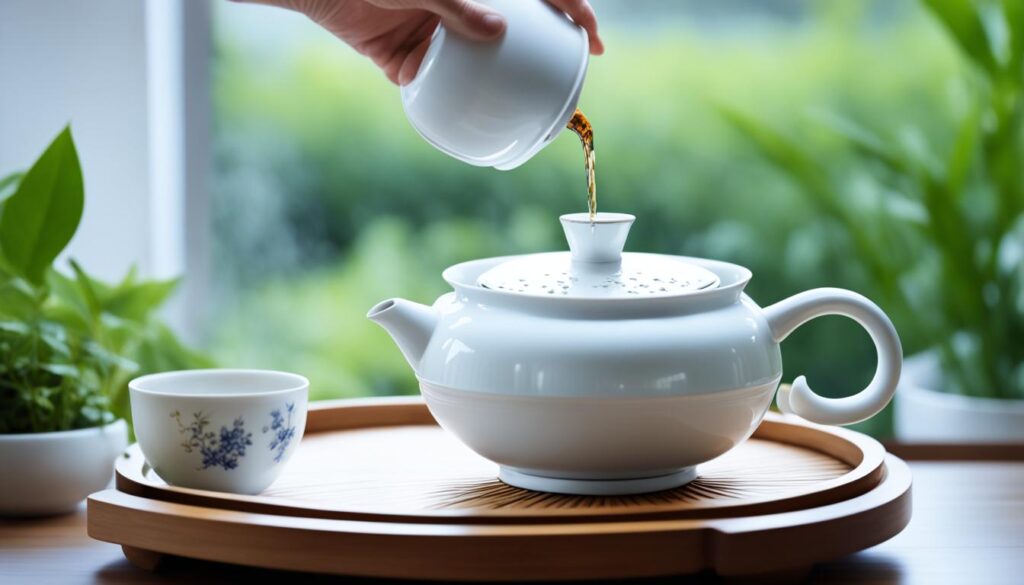
| Gaiwan Brewing Phase | Sensory Experience | Cultural Significance |
|---|---|---|
| Warming the Gaiwan | Getting ready for the scent | Welcome with the warmth of tradition |
| Tea Leaf Awakening | First scent boosts excitement | Starts our shared tea journey |
| Initial Pour | Taste buds meet the tea’s freshness | Shows importance of first impressions |
| Subsequent Infusions | Flavors deepen with each pour | Shows how patience builds understanding |
The rituals and ceremonies of Gaiwan remind us that tea brewing is rich in history. During a Gongfu tea ceremony, being mindful makes Gaiwan brewing in culture special. It’s a practice of precision and heritage.
Conclusion
As we explored the skill of mastering Gaiwan brewing, we learned it’s more than making tea. It links us to Chinese tea rituals. The Gaiwan shows how design meets purpose, from its curved cup to the fitting lid. By embracing traditional tea culture with a Gaiwan, we keep history alive. We cherish ancient methods that enhance our focus and deepen our love for tea’s delicate flavors.
Using a Gaiwan for authentic tea experiences takes us back in time and lets us enjoy every sip’s aroma and taste. For tea lovers, mastering the Gaiwan is crucial. It connects old traditions with modern enjoyment. This simple yet elegant tool captures our imagination. It lets the tea tell its unique story with every pour.
The renewed interest in traditional tea shows our wish to find peace and connection in old rituals. Gaiwan brewing insights offer a chance to learn not just about tea, but also the culture and patience needed to make it. The Gaiwan stands as a symbol of heritage, skill, and the joy of a perfect cup of tea as we share these traditions with the world.
